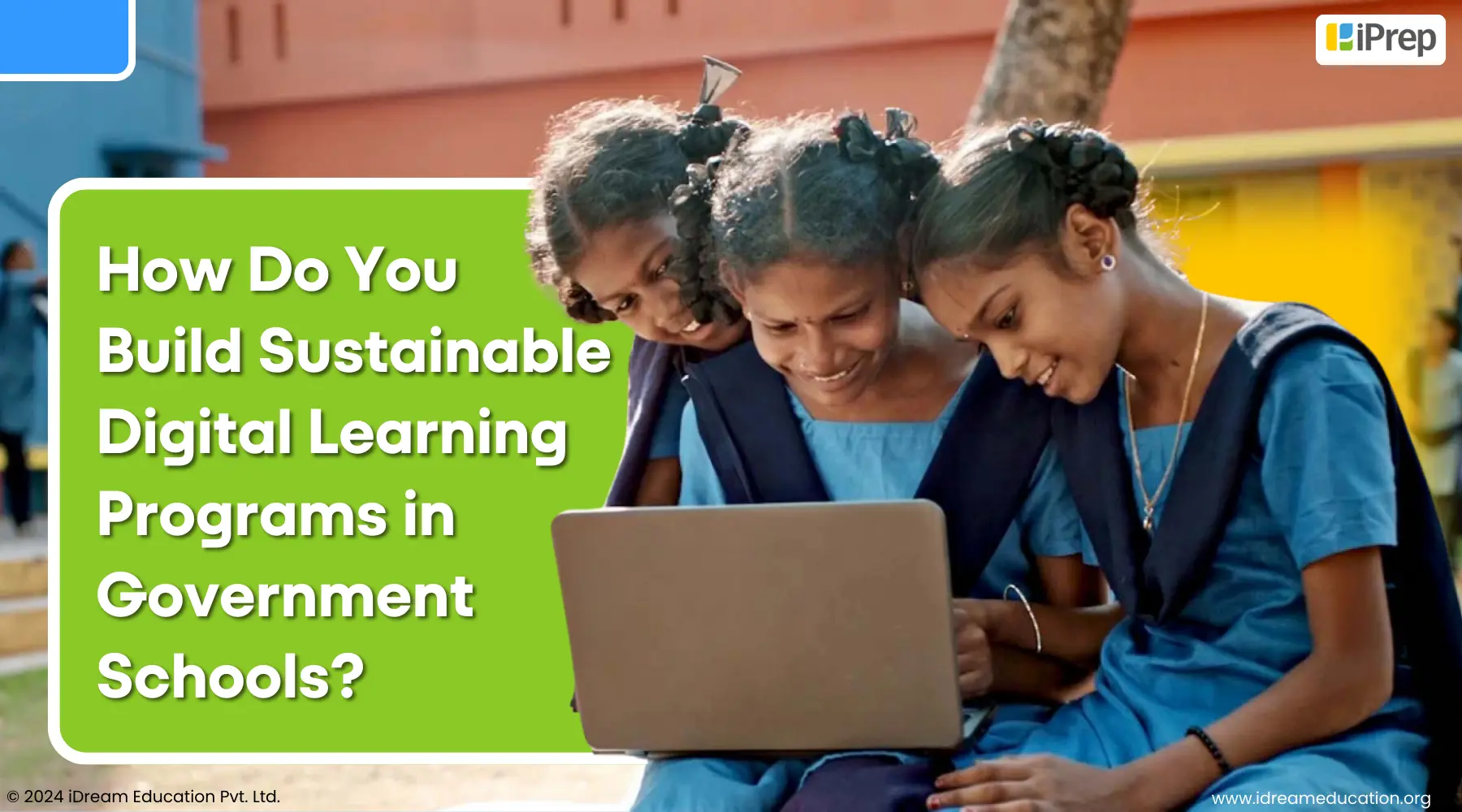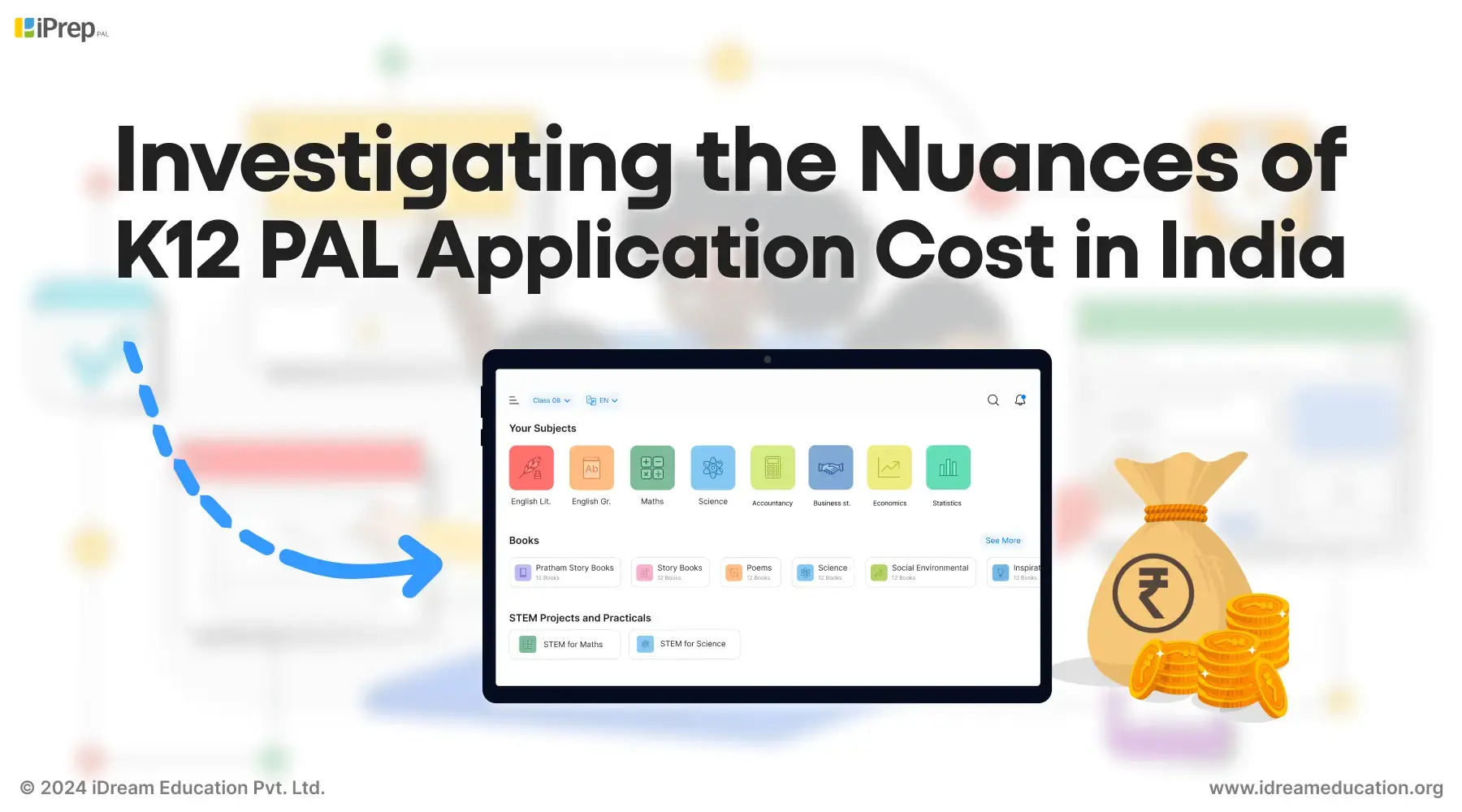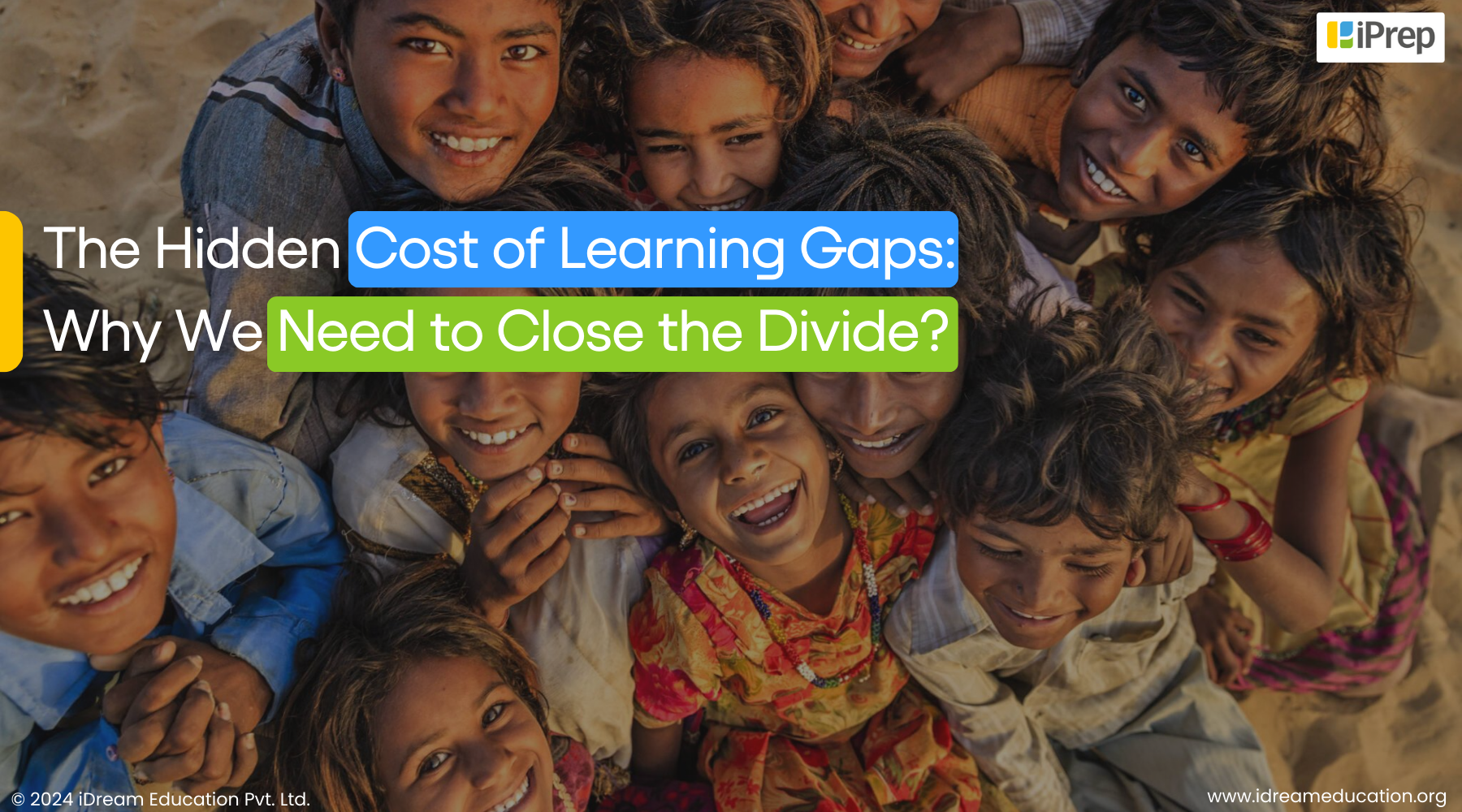Then and Now! How the Evolution of the Teacher Training Model is Leading to Higher Acceptance of Technology in Classrooms by Teachers
The evolution of the teacher training model has seen a remarkable shift. From traditional, lecture-based instruction to a more dynamic and student-centered approach.
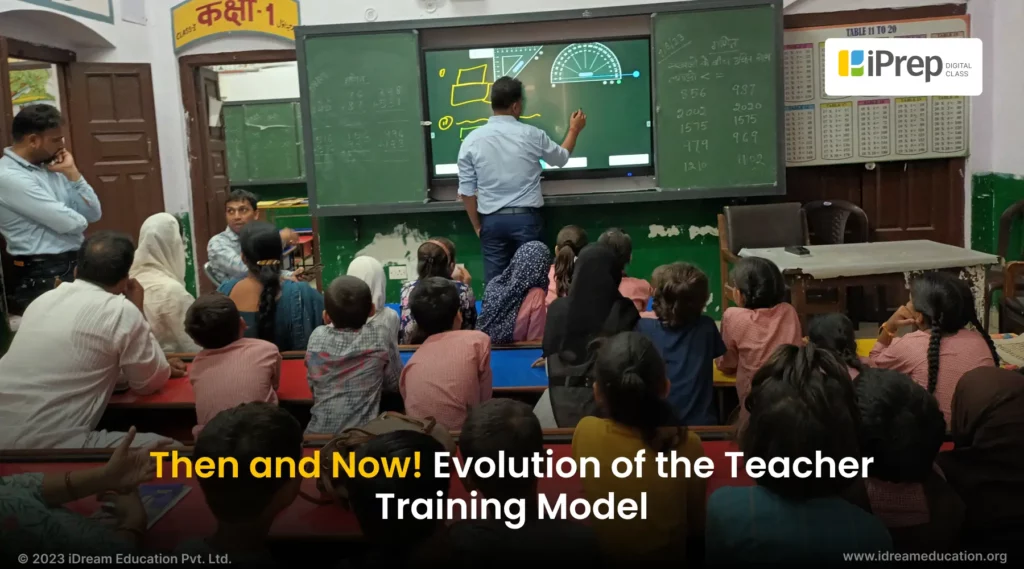
In recent years, teacher training programs have embraced innovative techniques. The core focus is on incorporating technology, enabling real-world classroom experiences, and a greater focus on pedagogical theories. This evolution recognizes the importance of equipping teachers with skills and adaptability to meet the diverse needs of today’s students in an ever-changing educational landscape.
If you journey back to your school days, you can reminisce about the way teachers interacted with students. They often took the time to engage with individual students, trying to understand the reason for a limited engagement, problem-solving, and more. Many of you might have not got the attention you were looking for!
Let’s delve deeper into the Teacher Training Model during that era.
- Behaviorism and Direct Instruction
This approach prioritized explicit teaching methods and measurable results. Different subject teachers had their unique ways of explaining concepts. Some were trained to encourage students to read and explain the topic. While others used chalkboards for visual aids or to help students grasp concepts from textbooks. It was a diverse landscape of instructional techniques.
- Inquiry-Based Learning to nurture students’ curiosity
Teachers were trained to guide students for asking questions, conducting experiments, and finding solutions. Teacher training emphasized the development of inquiry skills, making this approach centered around questions and problem-solving within the classroom environment.
- Apprenticeship Model
Looking further back in history, you find the Apprenticeship Model, where teaching was passed down through apprenticeships. New teachers closely collaborated with experienced teachers, placing a significant emphasis on practical experience over formal training. This teacher training model highlighted the value of learning by doing, under the guidance of those with extensive teaching experience.
The Teacher Training Model of that era laid the foundation for modern pedagogy, shaping educators who continue to inspire generations.
Let’s delve deeper into the Teacher Training Model Now!
Needs Assessment
Digital Learning solutions in schools are motivating teachers to conduct needs assessments. It helps them gain insight into their students’ specific requirements, including their current learning levels, teaching practices influencing these levels, and areas where improvement is needed. A recent example of this is a baseline assessment for more than 6,000 students in schools of Meghalaya on learning tablets to derive the learning levels of each one of them.
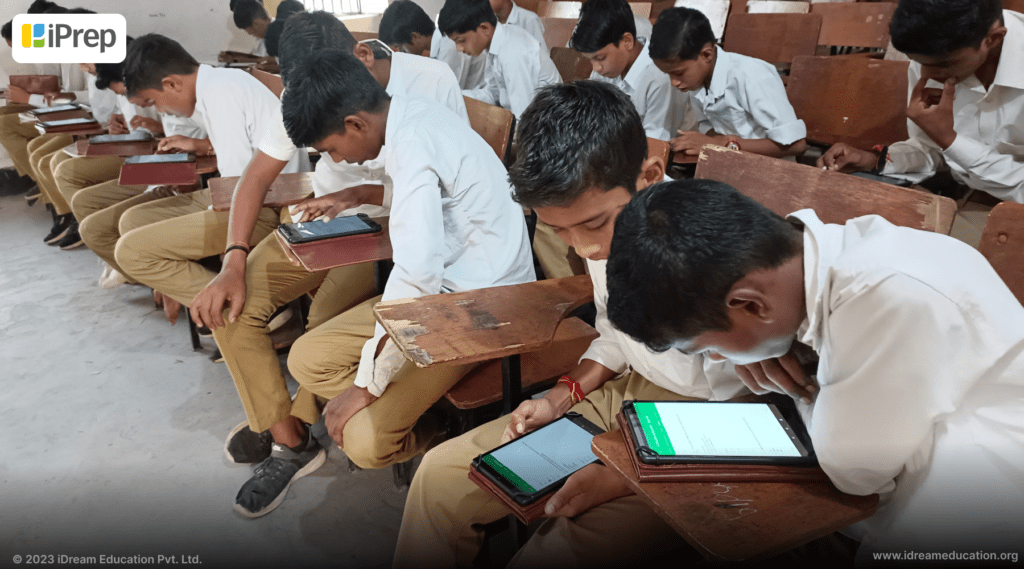
Pedagogical Foundation
Teachers now receive training to adeptly adapt their enhance their teaching approach in alignment with the digital environment. They now prioritize interactive teaching techniques such as instruction using simulations or videos on topics based on Bloom’s taxonomy for better learning and long-term recall to effectively engage students. iDream Education, when integrating digital learning solutions like smart classrooms, digital libraries train teachers on various ways to incorporate digital content into their classes. Consequently, teachers are now using practice on iPrep for quiz games to test students’ understanding of different topics. They now use animated lessons to develop conceptual clarity and integrate more such strategies.
Technical Skills
With the implementation of digital learning solutions in schools, teachers undergo training in navigating and utilizing learning management systems (LMS), reporting tools, and various devices available to them. This equips them with the necessary skills to seamlessly integrate technology into their regular teaching routines.
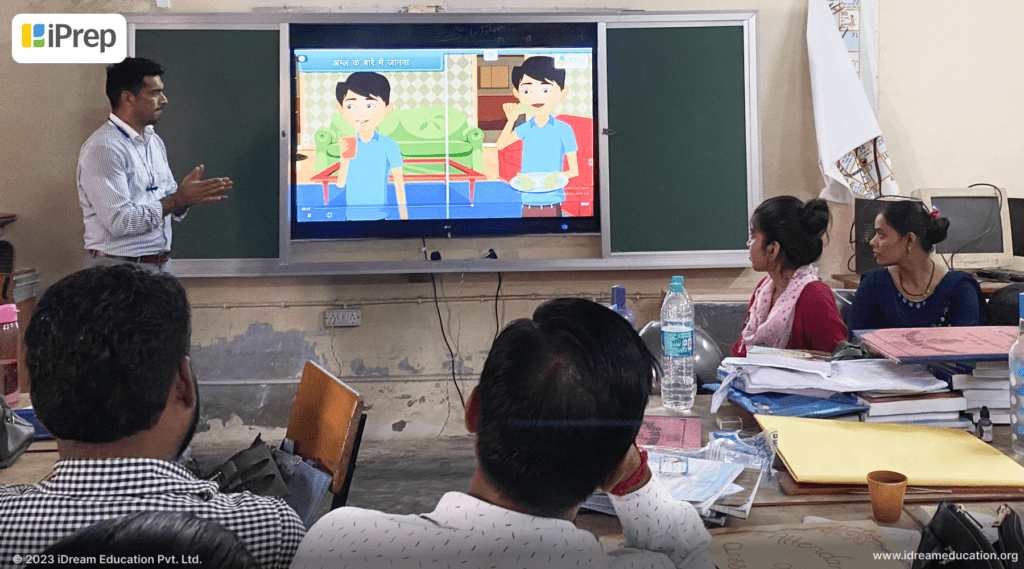
Blended Learning Models
Teachers are now proficient in practicing blended learning with students. This approach combines both online and in-person instruction, utilizing personalized devices that students have at home for learning purposes.
Content Development
Teachers are equipped with the skills to create their own digital learning materials, which may include video lectures, interactive quizzes, and e-books. Additionally, we encourage them to leverage open educational resources (OER) to enhance the efficiency and engagement of their teaching.
Continuous Assessment and Feedback
Teachers receive training in conducting regular assessments of their students to evaluate their learning progress and address any learning gaps. This practice fosters ongoing professional development and empowers educators to stay informed about the latest trends and technologies in digital education.
Collectively, these teacher training approaches are instrumental in promoting continuous professional development among teachers.
iDream Education recognizes the pivotal role teachers play in molding the lives of students. Therefore, their primary emphasis when integrating digital learning solutions into schools lies in experiential teacher training. Dedicated training ensures that every teacher becomes adept at utilizing the devices integrated into their classrooms and navigating the rich content categories of iPrep. Through this comprehensive training, the aim is to empower teachers to enhance their teaching effectiveness and efficiency, granting them the opportunity for continuous self-improvement. Ultimately, their goal is to foster the upskilling of teachers with the evolving landscape of the education system, thereby equipping them to thrive in the changing paradigm of education to enable grade level excellence for their students.


